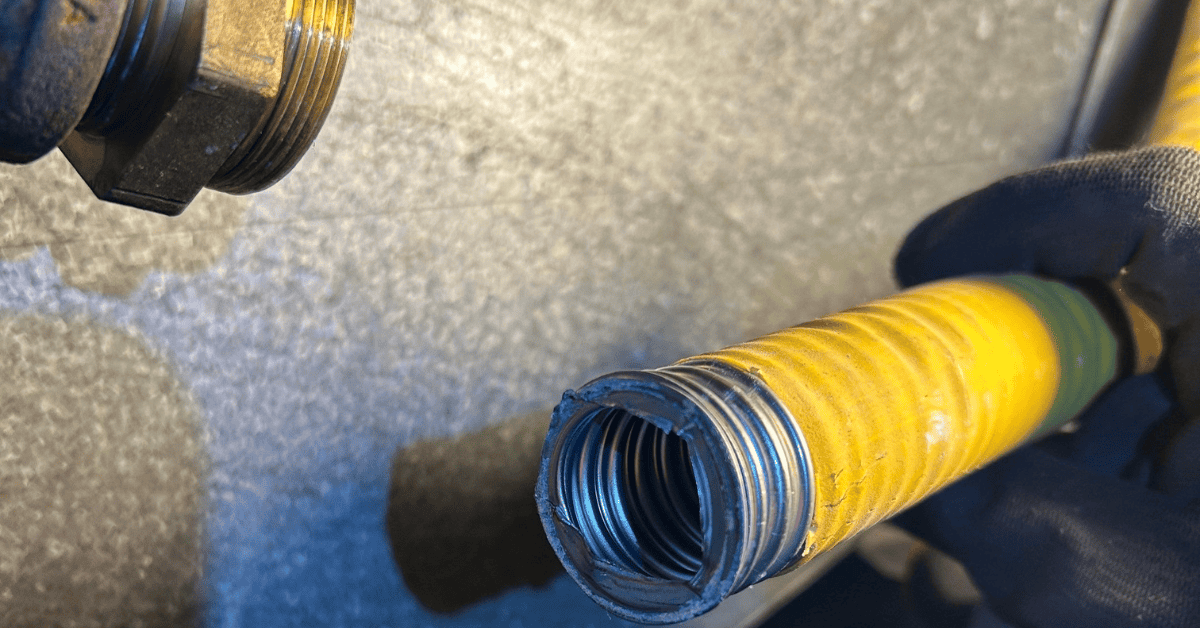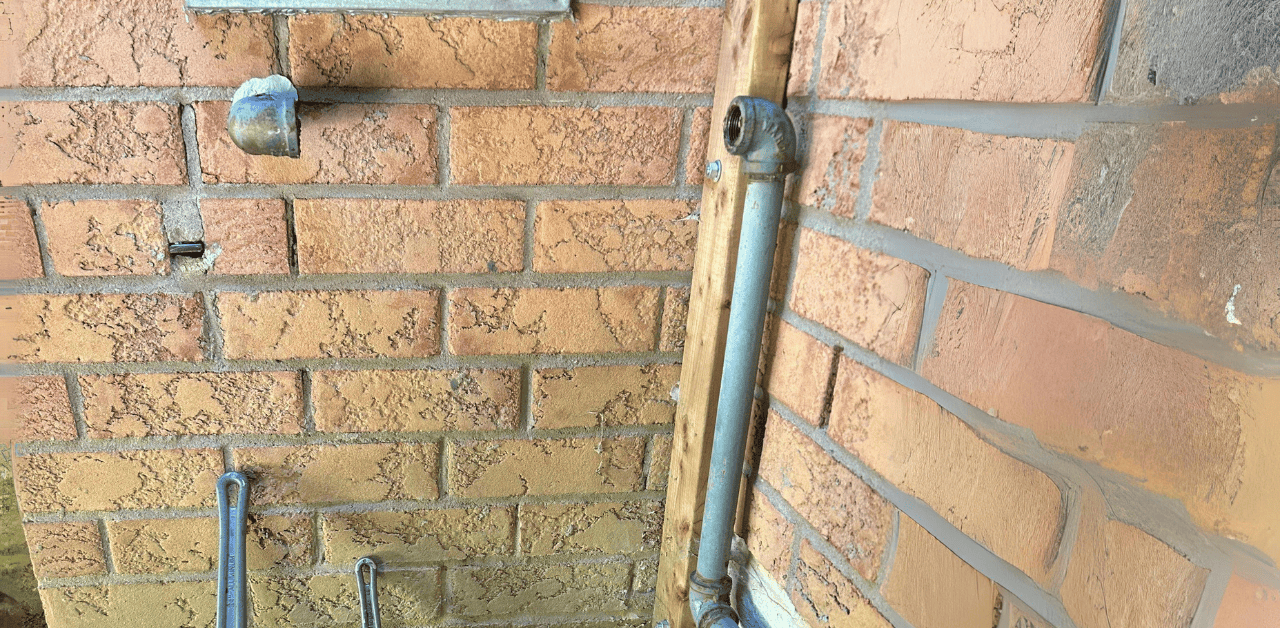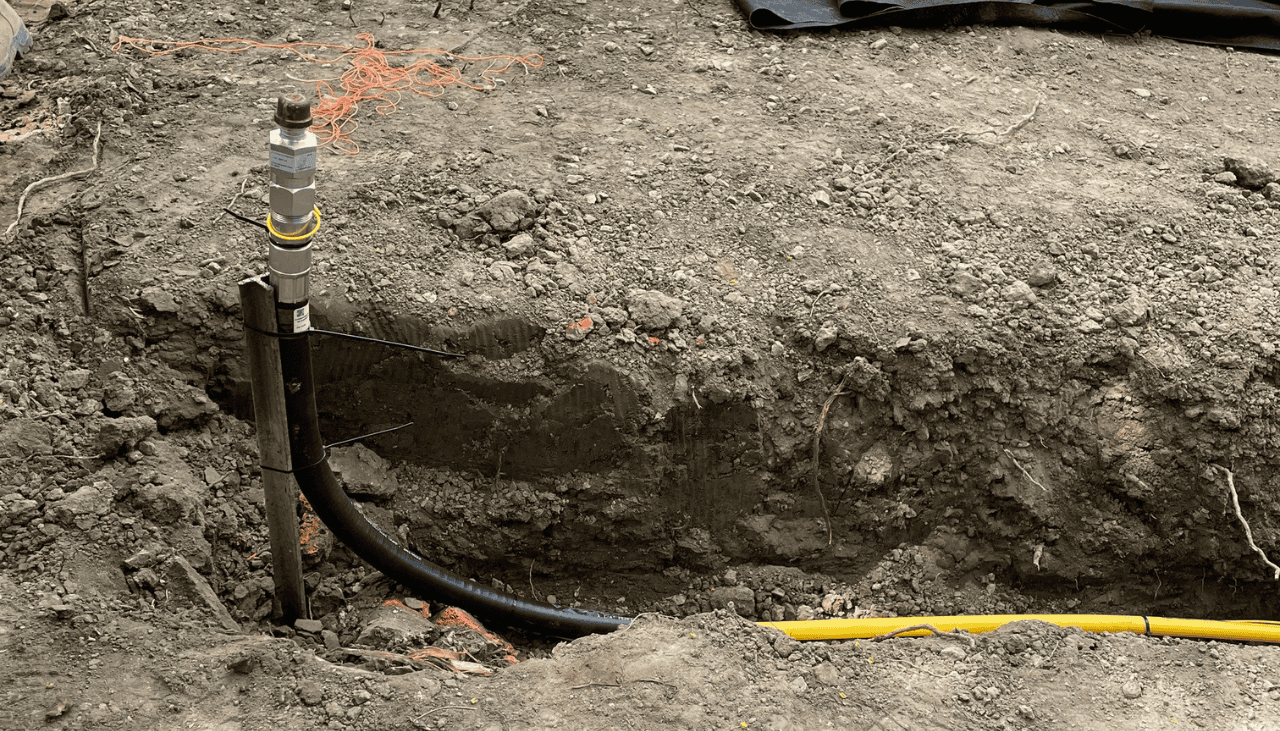If you smell gas in your house, act quickly to stay safe.
- Action 1 – Leave the house right away.
- Action 2 – Turn off the main gas valve if you can do it safely.
Carbon monoxide detectors can help find leaks, so it’s good to have them.
- Check your appliances and vents often, and get them inspected every year. Leaky pipes and broken appliances are common reasons for gas leaks.
- Make an evacuation plan and practice it with your family.
By knowing the risks and taking steps to prevent them, you can keep your home safe from gas leaks.
Key Takeaways
- Swiftly evacuate the premises if you smell gas, and develop an evacuation plan to ensure safety.
- Locate and shut off the main gas valve to prevent further gas leakages.
- Install carbon monoxide detectors and maintain them regularly to detect potential gas leaks.
- Never attempt to find the source of the leak yourself, and instead, call the gas company or authorities for assistance.
- Open windows and doors to ventilate the area but avoid using electrical appliances or sparking devices that can ignite the gas.
Understanding the Risks of Gas Leaks
When it comes to gas leaks, understanding the risks begins with a fundamental knowledge of natural gas itself and the common causes of leaks in homes. Natural gas is a highly flammable substance that can lead to dangerous situations if not managed properly. Homeowners should be aware that gas leaks can occur due to faulty appliances, deteriorating pipes, or poor installation practices. In the event of a leak, prompt gas leak repair is essential to ensure safety and minimize potential hazards.
Natural gas is a colourless, odourless, and highly flammable gas that can pose a significant threat to safety if not handled properly.
What is Natural Gas?
Natural gas is a fossil fuel composed primarily of methane, with small amounts of other hydrocarbons and impurities. Its properties make it a clean-burning and efficient energy source, but also highly flammable and potentially hazardous if not handled properly.
Understanding the composition and properties of natural gas is vital in recognizing the risks associated with gas leaks and taking necessary measures to guarantee safety.
Composition and Properties
Natural gas is mostly made up of methane, along with some other gases and a few impurities. It is a flammable, colourless, and odourless gas.
If not handled properly, it can be very dangerous. To help people detect leaks, a substance called mercaptan is added to give natural gas a unique smell.
This way, people can quickly recognize the smell of gas and take action to prevent accidents.
Common Causes of Gas Leaks in Homes
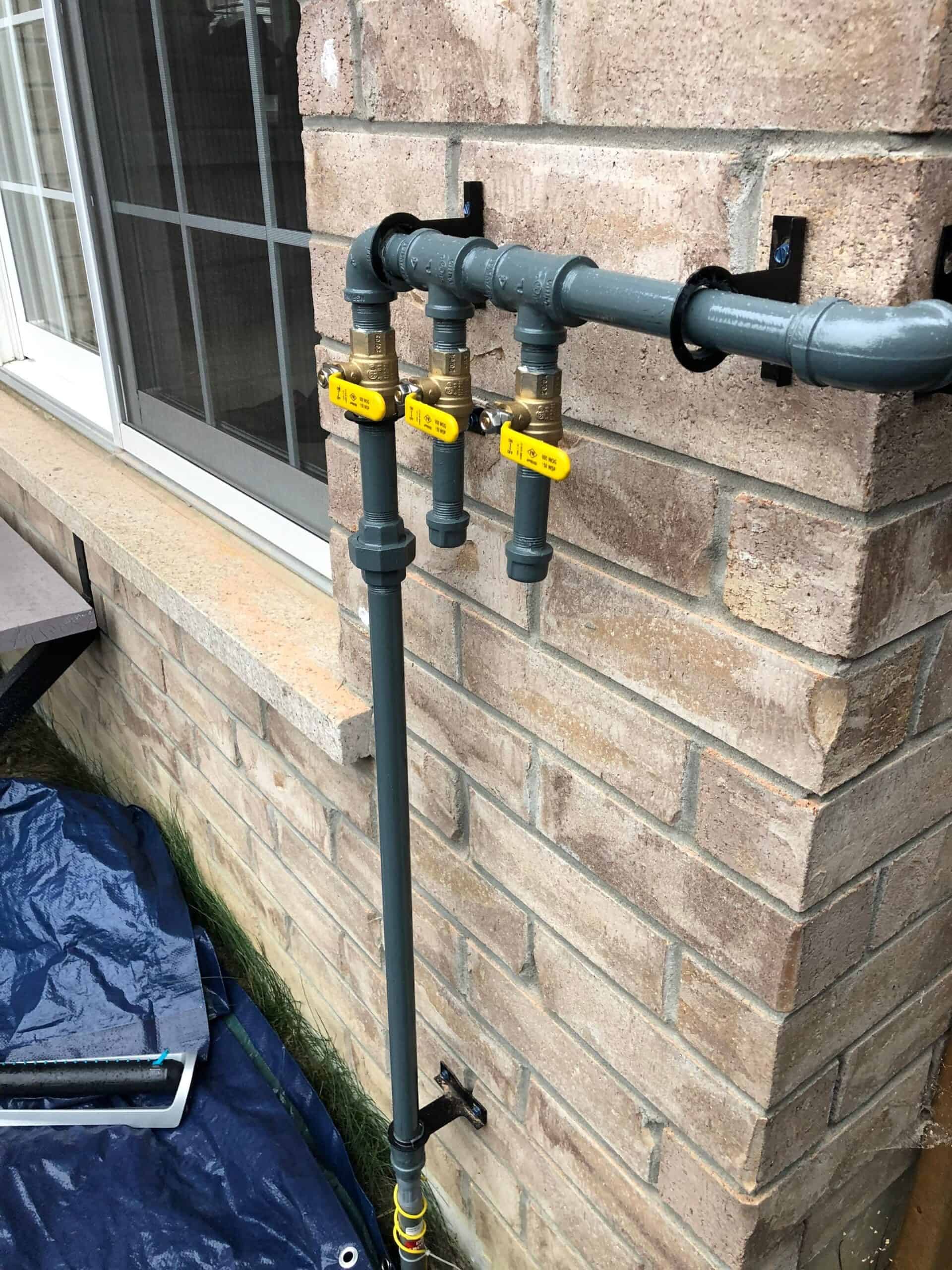
Gas leaks in homes can occur due to a variety of factors, and understanding the common causes is vital for prevention and mitigation.
Two of the most prevalent causes of gas leaks are faulty appliances and leaky pipes and fittings, which can lead to devastating consequences if left unchecked.
Faulty Appliances
Faulty appliances are a common cause of gas leaks in homes. These leaks can release toxic fumes into the air, posing a serious danger to residents. Appliances such as water heaters, furnaces, and ovens are particularly prone to gas leaks due to issues like rust, old parts, or incorrect installation.
This can lead to the air becoming unsafe to breathe.
Leaky Pipes and Fittings
Corroded or loose connections in pipes and fittings can let dangerous gas into homes, putting people’s health and safety at risk. To reduce this danger: regular inspections and maintenance of plumbing systems are essential. Homeowners should be vigilant about checking for signs of rust formation on gas pipes, as this can indicate deterioration and potential leaks. Additionally, securing and tightening connections can prevent accidents and ensure a safe living environment.
- Check gas lines often for damage.
- Make sure there is good airflow where gas appliances are used.
- Get a licensed gas fiiter to fix or replace bad pipes and fittings.
- Call your gas company if you think there is a leak or smell gas.
Immediate Steps to Take When You Smell Gas
When you detect a gas smell in your home, prompt action is vital to guarantee your safety.
The initial response is important, and it’s imperative to take immediate steps to mitigate the risk of explosion or fire.
How to Evacuate Safely
When a gas leak is suspected, swift and safe evacuation is paramount. In this critical moment, having a well-rehearsed evacuation plan in place can be a lifesaver, especially for families with young children or pets.
In the following sections, we will outline crucial steps for developing a thorough evacuation plan that includes all household members, as well as valuable tips for safely evacuating pets.
Evacuation Plan for Families
If there is a gas leak, a practiced evacuation plan helps everyone leave the house quickly and safely.
Make an emergency evacuation plan, and be sure everyone knows what to do.
Install a carbon monoxide alarm system to detect leaks.
- Find escape routes and pick a meeting spot outside.
- Practice the plan with everyone in the family, including kids.
- Make sure working phones are easy to find to call emergency services.
- Post the plan where everyone can see it, and update it every year.
Tips for Evacuating Pets
Keeping pets safe during a gas leak evacuation is important. Prepare ahead of time and have a clear plan to quickly and safely get them out.
Choose a safe meeting spot for pets, keep carriers and leashes handy, and have a backup person to help if you’re not home.
Stay calm and focus on getting your pets to safety first.
Turning Off the Gas Supply
When you smell gas in your house, turning off the gas supply is an essential step to prevent a potential explosion or fire. To do this, you need to locate the main gas valve, which is typically found near the gas meter or where the gas line enters your home.
Properly shutting off the gas supply requires identifying and operating this valve correctly, a process that requires attention to detail and a clear understanding of the necessary steps.
Locating the Main Gas Valve
The main gas valve is very important for turning off the gas in an emergency. You can find it near the gas meter or where the gas line comes into your house.
- Look around your furnace, stove, and water heater for the valve.
- Find a handle or lever you can turn clockwise to shut off the gas.
- Make sure all your heating and cooling appliances are connected to this shut-off valve.
- Learn where the valve is so you can act fast in an emergency.
Detecting Gas Leaks in Your Home
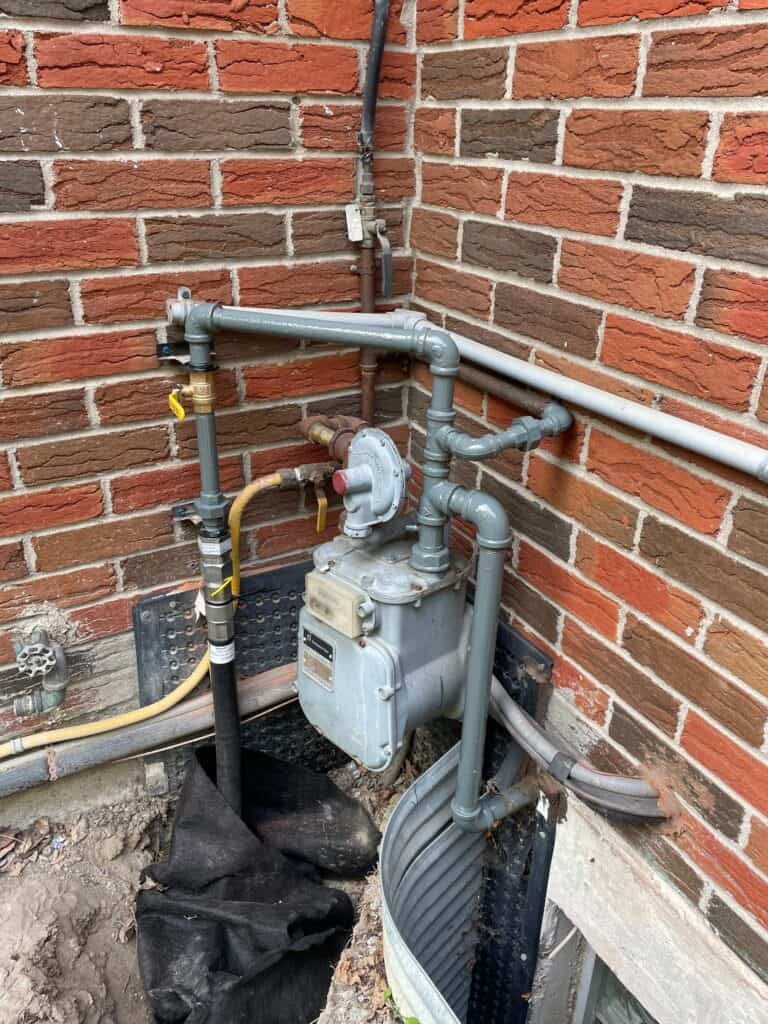
When it comes to detecting gas leaks in your home, having the right tools and understanding how they work is vital. Gas detectors are important devices that can alert you to the presence of hazardous gases, providing an early warning system to prevent accidents.
Types of Gas Detectors
When it comes to detecting gas leaks in your home, the type of gas detector you use is essential.
There are several options available, including carbon monoxide detectors, which specifically detect the presence of CO, and combination smoke and gas detectors, which offer thorough protection.
Carbon Monoxide Detectors
Carbon monoxide detectors are important for keeping you safe by finding gas leaks. They warn you if there’s dangerous carbon monoxide in your home. Unlike smoke and heat detectors, which detect fire and heat, carbon monoxide detectors find the gas that you can’t see or smell.
Here are some key features:
- Digital display for easy reading
- Battery backup so it always works
- Can connect with other safety devices
- Certified by a trusted testing group
Combination Smoke and Gas Detectors
Many homeowners choose combination smoke and gas detectors for extra protection against fires and gas leaks.
These detectors use advanced sensors to spot danger and sound an alarm to warn everyone.
You can find options that mount on the wall or run on batteries, making it easy to keep your home safe.
How Gas Detectors Work
Gas detectors rely on advanced sensor technologies to identify potential gas leaks in your home. Understanding how these sensors function is essential in guaranteeing the effectiveness of your gas detector.
Sensor Technologies
New sensor technologies have made it much easier to detect gas leaks in homes. These sensors can give early warnings that could save lives. Here are some ways they find gas fumes: Some advanced sensors are equipped with microphones that enhance their capability by identifying gas line hissing sounds, which indicate a potential leak. Additionally, they utilize sophisticated algorithms to analyze the surrounding air for unusual chemical signatures, providing a comprehensive safety net for homeowners. Regular maintenance and updates to these systems can further increase their efficiency in detecting hazardous situations.
- Electrochemical sensors: They measure gas by using chemical reactions.
- Catalytic sensors: They find gas by causing oxidation reactions.
- Infrared sensors: They spot gas by seeing how it absorbs infrared light.
- Semiconductor sensors: They detect gas by checking changes in electricity.
These sensors often have an LED light that warns homeowners about possible gas leaks.
Maintenance and Battery Replacement
Regular maintenance and changing batteries on time are important to keep gas detectors working well and spot gas leaks at home.
Check your detectors often to keep them in good shape. When you set up detectors, follow the directions from the maker and learn about safety.
Change the batteries when recommended to stop false alarms and stay protected.
Preventative Measures to Avoid Gas Leaks
To minimize the risk of gas leaks, it is vital to take proactive steps in maintaining a safe home environment.
Regular maintenance of gas appliances, proper installation, and adequate ventilation are key preventative measures that can help avoid gas leaks.
Regular Maintenance of Gas Appliances
Regular maintenance of gas appliances is vital in preventing gas leaks and ensuring a safe living environment. One of the most effective ways to achieve this is by scheduling annual inspections.
Annual inspections can help identify potential issues before they escalate into hazardous situations. By prioritizing these checks, homeowners can greatly reduce the risk of gas leaks and ensure their appliances operate safely and efficiently.
Annual Inspections
Gas appliance maintenance is crucial for preventing gas leaks. Yearly check-ups, conducted by a skilled inspector or HVAC technician, play a significant role in ensuring your appliances comply with installation rules, safety standards, and building codes.
Each inspection should include:
- Looking at appliances and vents for any damage or rust.
- Testing the appliances to ensure they are functioning correctly.
- Checking for leaks using special tools.
- Providing advice on any necessary repairs or replacements to maintain safety.
Proper Installation and Ventilation
Proper installation and ventilation are vital in preventing gas leaks in the home. Adhering to professional installation guidelines is imperative to guarantee that gas appliances are safely connected and functioning correctly. Homeowners should also familiarize themselves with gas line installation steps in Ontario to ensure compliance with local regulations. Regular maintenance checks on gas appliances can further reduce the risk of leaks and detect potential problems early. Always seek help from certified professionals when dealing with gas lines to ensure safety and efficiency.
Professional Installation Guidelines
It’s important to follow the rules when putting in gas-powered appliances to keep everyone safe and stop gas leaks. Bad installation can be very dangerous.
To make sure everything is done right, follow these steps:
- Read the manufacturer’s instructions to know how to install it correctly.
- Follow local laws about installing gas appliances.
- Get a professional to install it to make sure it’s safe and secure.
- Check the gas valve regularly to stop leaks and damage.
Health Effects of Gas Exposure
Exposure to natural gas or carbon monoxide can have severe and potentially life-threatening consequences. Prolonged inhalation of these gases can lead to a range of health issues, from mild discomfort to severe poisoning.
It is crucial to understand the symptoms of carbon monoxide poisoning and the long-term health risks associated with gas exposure to take prompt action in the event of a leak.
Symptoms of Carbon Monoxide Poisoning
When carbon monoxide (CO) builds up in an enclosed space, it can lead to poisoning, which can have devastating consequences if left untreated.
The critical symptoms of CO poisoning can be subtle, but it is crucial to recognize them promptly to prevent severe health complications.
Immediate symptoms of CO poisoning include headaches, dizziness, nausea, and fatigue, which can quickly escalate into more severe and life-threatening conditions if not addressed promptly.
Immediate Symptoms
Carbon monoxide poisoning can cause symptoms that get worse quickly if the gas leak isn’t found and fixed right away.
Common symptoms of carbon monoxide poisoning include:
- Headache and dizziness.
- Nausea and feeling very tired.
- In serious cases, it can cause passing out.
Long-term Health Risks
Prolonged exposure to gas leaks can lead to chronic health issues, even at levels not immediately hazardous.
The accumulation of toxic substances in the body can cause lasting damage to crucial organs and systems, resulting in debilitating conditions.
It is important to understand the long-term health risks associated with gas exposure to take prompt action and mitigate potential harm.
Chronic Exposure Effects
Breathing in natural gas for a long time can cause serious health problems. This gas is colourless and harmful, often coming from burning fuels. If you think you have been around natural gas for a long time, go to a doctor right away.
- It can harm your brain and make it hard to think clearly.
- It can cause breathing problems and asthma.
- It can lead to heart disease and high blood pressure.
- It can increase the risk of cancer and other illnesses.



